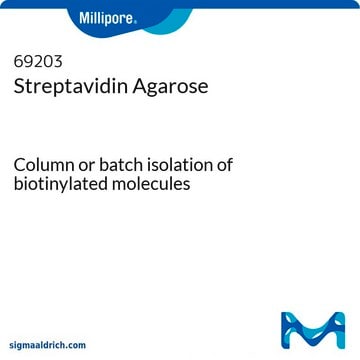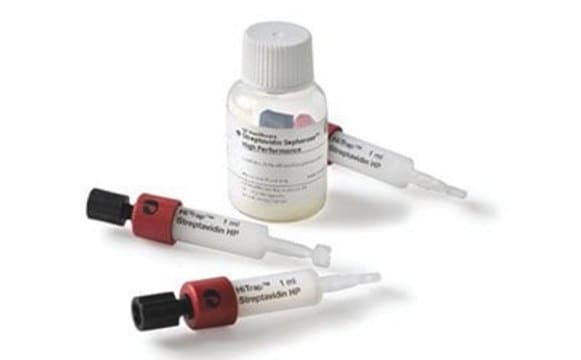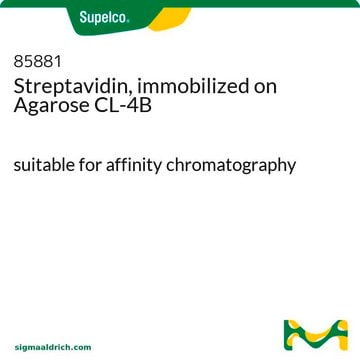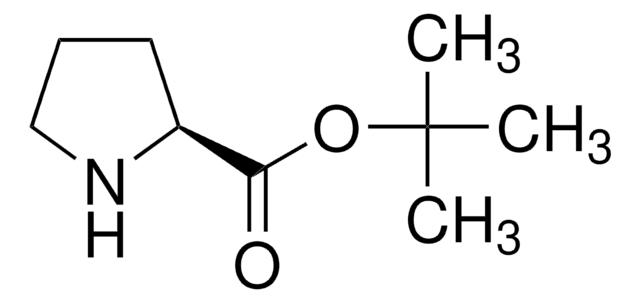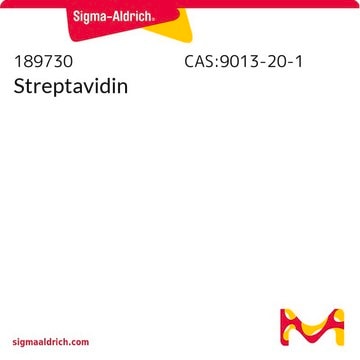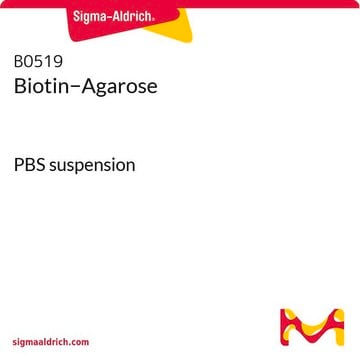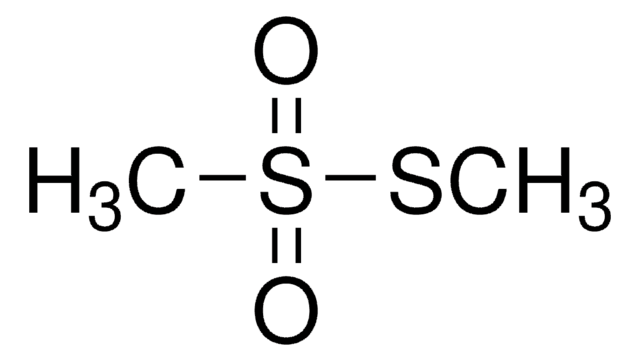S1638
Streptavidin−Agarose from Streptomyces avidinii
buffered aqueous suspension
Sinónimos:
streptavidin agarose beads, streptavidin agarose resin
About This Item
Productos recomendados
Formulario
buffered aqueous suspension
Extensión del etiquetado
≥1 mg per mL
técnicas
affinity chromatography: suitable
Matriz
4% beaded agarose
activación de la matriz
cyanogen bromide
unión a la matriz
amino
espaciador de matriz
7 atoms
capacidad
≥15 μg/mL binding capacity (biotin)
temp. de almacenamiento
2-8°C
Aplicación
- to pull down biotinylated cell surface proteins during the quantification of plasma membrane transforming growth factor β (TGFβ) receptor II (TβRII) and Tβ
- RII internalization
- in biotinylated miRNA pull-down assay; as secondary antibodies in immunoprecipitation
Acciones bioquímicas o fisiológicas
Forma física
Código de clase de almacenamiento
10 - Combustible liquids
Punto de inflamabilidad (°F)
Not applicable
Punto de inflamabilidad (°C)
Not applicable
Elija entre una de las versiones más recientes:
Certificados de análisis (COA)
¿No ve la versión correcta?
Si necesita una versión concreta, puede buscar un certificado específico por el número de lote.
¿Ya tiene este producto?
Encuentre la documentación para los productos que ha comprado recientemente en la Biblioteca de documentos.
Los clientes también vieron
Contenido relacionado
Investigue las interacciones proteína-proteína in vitro con análisis pull-down, utilizando métodos de afinidad, pull-down con GST, TAP y co-inmunoprecipitación.
Investigue las interacciones proteína-proteína in vitro con análisis pull-down, utilizando métodos de afinidad, pull-down con GST, TAP y co-inmunoprecipitación.
Investigue las interacciones proteína-proteína in vitro con análisis pull-down, utilizando métodos de afinidad, pull-down con GST, TAP y co-inmunoprecipitación.
Investigate in vitro protein-protein interactions with pull-down assays, utilizing affinity, GST pull-down, TAP, and co-immunoprecipitation methods.
Nuestro equipo de científicos tiene experiencia en todas las áreas de investigación: Ciencias de la vida, Ciencia de los materiales, Síntesis química, Cromatografía, Analítica y muchas otras.
Póngase en contacto con el Servicio técnico